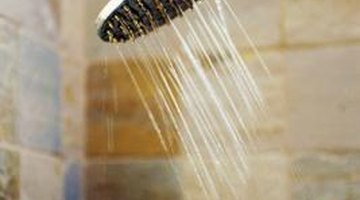How to Keep Water From Leaking out of a Handicap-Accessible Shower Stall
Handicap-accessible shower stalls differ from traditional stalls in both size and structure. A handicap-accessible stall must be large enough to accommodate a wheelchair, which also means it cannot have a ledge or step along the edge of the shower. While most showers do have a raised edge to prevent water from escaping, handicap-accessible stalls do not have this edge, so water sometimes leaks from the stall. However, there are a number of ways to minimize water leakage from any shower stall.

Step 1
Ensure that the faucet and shower head do not leak while not in use. You can take every step possible to prevent shower leaks, but if the faucet itself leaks, water can penetrate the surrounding areas even while not in use.
Step 2
Install a shower pan inside the shower. A shower pan is angled downward so that water pours to the center drain of the shower, rather than pouring out the edges. Handicap-accessible shower pans do not have edges, allowing them to be wheelchair-accessible. Some shower pans can simply be placed inside the shower stall and sit loosely on the tile, while others must be screwed in. Consult your shower pan's installation manual for more details.
Step 3
Roll up a towel and place it along the edge of the shower. While a towel does not offer a permanent solution, it is a quick way to stop showers from leaking during brief use.
Step 4
Install a weighted shower curtain in the handicap-accessible shower stall. A weighted shower curtain is extra long and has internal weights along the bottom of the curtain. These weights keep the curtain firmly in place and prevent water from escaping while the shower is in use.
References
Photo Credits
- Thinkstock/Comstock/Getty Images
More Articles



